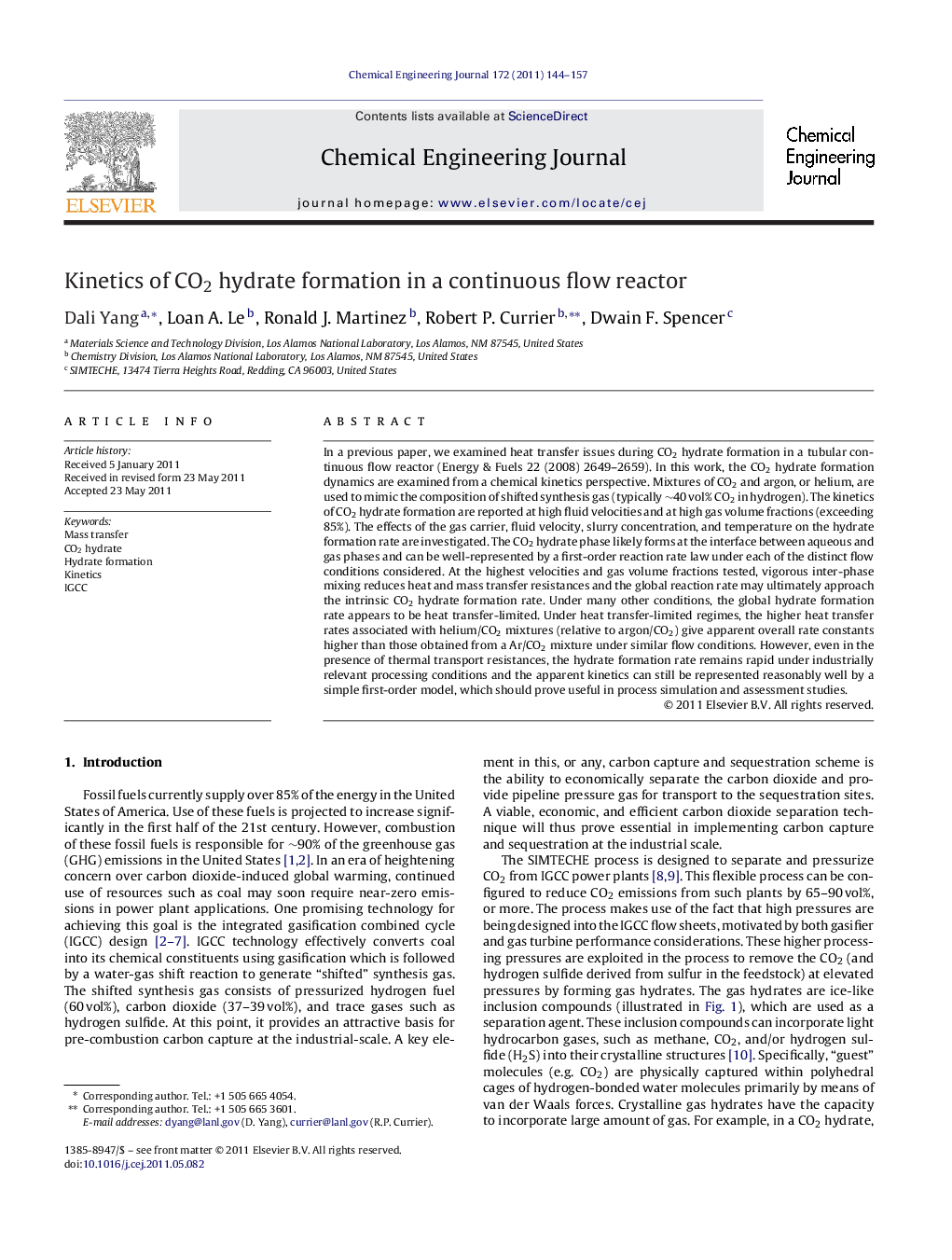| کد مقاله | کد نشریه | سال انتشار | مقاله انگلیسی | نسخه تمام متن |
|---|---|---|---|---|
| 151037 | 456461 | 2011 | 14 صفحه PDF | دانلود رایگان |

In a previous paper, we examined heat transfer issues during CO2 hydrate formation in a tubular continuous flow reactor (Energy & Fuels 22 (2008) 2649–2659). In this work, the CO2 hydrate formation dynamics are examined from a chemical kinetics perspective. Mixtures of CO2 and argon, or helium, are used to mimic the composition of shifted synthesis gas (typically ∼40 vol% CO2 in hydrogen). The kinetics of CO2 hydrate formation are reported at high fluid velocities and at high gas volume fractions (exceeding 85%). The effects of the gas carrier, fluid velocity, slurry concentration, and temperature on the hydrate formation rate are investigated. The CO2 hydrate phase likely forms at the interface between aqueous and gas phases and can be well-represented by a first-order reaction rate law under each of the distinct flow conditions considered. At the highest velocities and gas volume fractions tested, vigorous inter-phase mixing reduces heat and mass transfer resistances and the global reaction rate may ultimately approach the intrinsic CO2 hydrate formation rate. Under many other conditions, the global hydrate formation rate appears to be heat transfer-limited. Under heat transfer-limited regimes, the higher heat transfer rates associated with helium/CO2 mixtures (relative to argon/CO2) give apparent overall rate constants higher than those obtained from a Ar/CO2 mixture under similar flow conditions. However, even in the presence of thermal transport resistances, the hydrate formation rate remains rapid under industrially relevant processing conditions and the apparent kinetics can still be represented reasonably well by a simple first-order model, which should prove useful in process simulation and assessment studies.
► Continuous formation of CO2 hydrates was demonstrated using a tubular reactor.
► Hydrate formation rates can be very rapid under industrially relevant conditions.
► For each flow regime the formation rate can be described by a first-order rate law.
► In many cases, global hydrate formation rates appear to be heat transfer-limited.
Journal: Chemical Engineering Journal - Volume 172, Issue 1, 1 August 2011, Pages 144–157